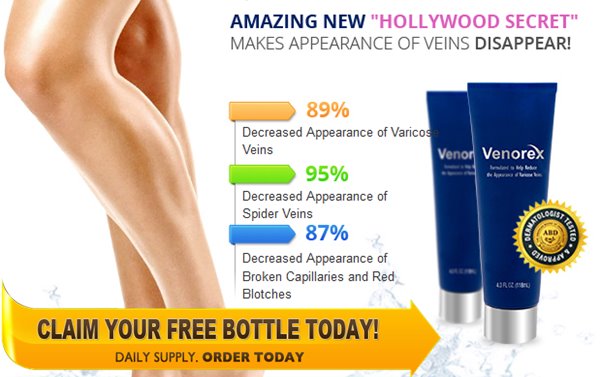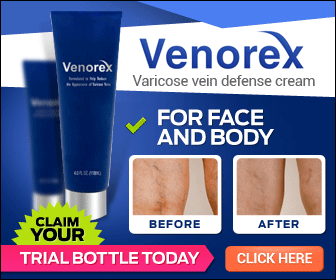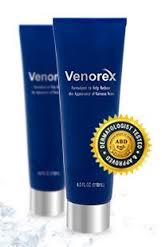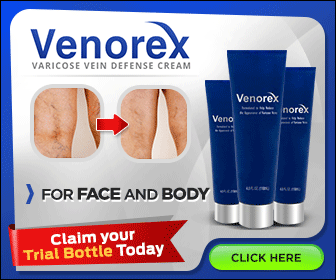Venorex Varicose Vein Cream – How To Help Varicose Veins
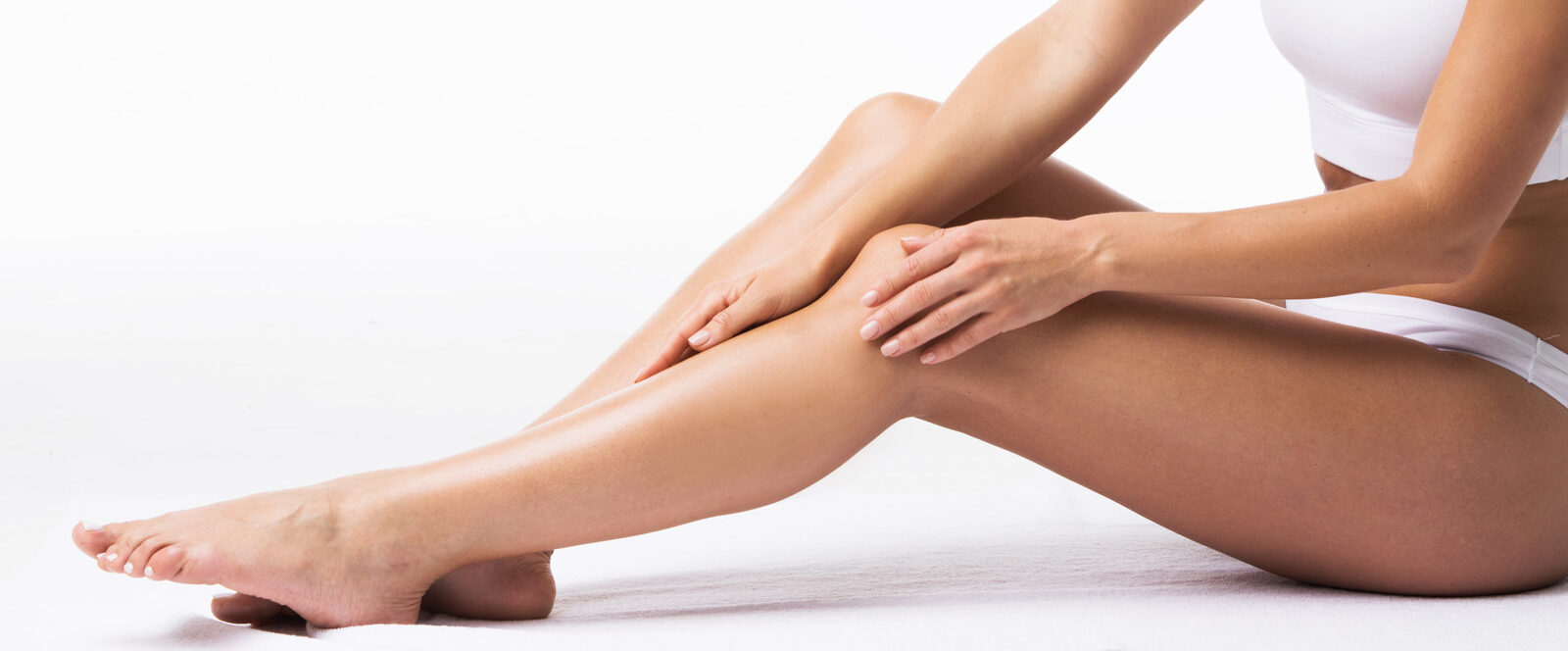
In this feature I want to explain (in simple terms) exactly what varicose veins are and both why and how they form and develop. At the same time I will Introduce you to Venorex varicose vein cream. This is claimed to be a new, injection free alternative to expensive a painful laser treatments or surgical procedures.
Venorex is an all natural varicose veins treatment cream which is scientifically formulated and of professional strength. It is specifically designed to make the unsightly appearance of varicose and spider veins diminish or disappear and to help prevent them in the first place. In other words it’s dual action. Both a varicose veins treatment and a defence cream. It’s certainly an option worth considering if you’re one of the millions affected by, or concerned about, varicose or spider veins. You can find out more here or Read Our Review >>>
How To Help Varicose Veins – Introduction
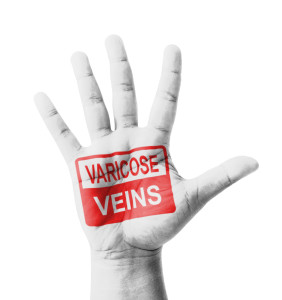 You’re here because you want to know how to help varicose veins … right? Well, my aim is to cover all the basics you need to know. I’ll explain what varicose veins actually are along with the symptoms and causes. Then I’ll touch on the medical options open to you, the various natural solutions and then I’ll introduce you to Venorex varicose veins treatment cream. At the bottom of the page you’ll find links to some key organisations and resources who can help further.
You’re here because you want to know how to help varicose veins … right? Well, my aim is to cover all the basics you need to know. I’ll explain what varicose veins actually are along with the symptoms and causes. Then I’ll touch on the medical options open to you, the various natural solutions and then I’ll introduce you to Venorex varicose veins treatment cream. At the bottom of the page you’ll find links to some key organisations and resources who can help further.
I hope you find it useful and informative. We welcome any feedback and you can click the following link to read more about us >>>. Before I go on I should add that I am NOT a medical professional and you should always seek professional advice if you have any concerns. In addition to this and in the interests of openness and honesty please note that I do have an affiliate relationship with Venorex. This means that if you click a link and decide to buy I may recieve a small commission. This does not however mean that you will be paying more for the product.
Right … now that’s all out of the way let’s get down to the facts and information you’re looking for! How to help varicose veins. Let’s first look at the problem of varicose veins itself
What Are Varicose Veins
 We’re all familiar with the term varicose veins and associate it with the appearance of those swollen, bulbous, twisted and unsightly veins on the legs. However, do we really know what they are and what the causes varicose veins?
We’re all familiar with the term varicose veins and associate it with the appearance of those swollen, bulbous, twisted and unsightly veins on the legs. However, do we really know what they are and what the causes varicose veins?
Veins are critical blood vessels that facilitate the transportation of deoxygenated blood from various parts of the body back to the heart and lungs for oxygenation. Varicose veins are veins that have become enlarged, swollen and twisted read more here >>>.
It’s a common condition that experts estimate to affect up to 33 percent of women and 17 percent of men worldwide. The legs are the area most common area to be affected. This is simply because as we’re upright for most of the day, the leg veins have to cope with more extreme pressure as they keep the blood flowing back up to the heart.Defying gravity if you like!
All veins are equipped with pairs of valves which allow the blood to flow through in the direction it should. This, to give it the technical term, is known as retrograde flow. Working correctly the valves will open to keep pumping the blood one way and closing to prevent it from flowing back. Should any valve cease to function properly or no longer match up correctly, the blood can start to flow backwards. In technical terms this is referred to as venous reflex. It’s when the blood stops flowing smoothly in one direction that the veins start to become enlarged and varicose.
Varicose Veins Made Simple
So, in very simple terms, a varicose vein forms when something goes a little wrong with the one way valves. Particularly when they don’t open or close properly. This malfunction results in the buildup of a small pocket of blood in the vein immediately below the faulty valve. In turn, this causes the visible swelling.
As I mentioned, varicose veins tend to most commonly affect the legs. This is pretty obvious when you think about the pressure the leg veins are under as the muscles pump the blood back towards the heart – particularly when we are standing up. These veins are responsible for pushing the blood all the way back up the legs and the one way valves have to work the hardest … directly against the pull of gravity! Nature is pretty amazing when you think about it.
Does It Get Worse?
Once you suffer from a varicose vein it can only get worse. The symptoms (particularly in early stages) are usually just cosmetic meaning it may not look great but it doesn’t hurt or cause any other problems. However, this can worsen and gradually the pain can increase (especially when standing up). Severe cases can result in significant swelling, a thickening of the skin and ulceration. In these cases, the condition can be incredibly painful and really very uncomfortable.
Different Types Of Varicose Veins
There are various different types of varicose veins. Specifically:
- Trunk Veins. These are the visibly and often ugly looking, thick, bulging, bulbous veins just below the surface of the skin. They are often quite long, knobbly and dark in color.
- Reticular Veins: Wideley known as feeder veins. These are flat, smaller (just a few mm) veins that are often blue or green in color and appear as lines just under the surface of the skin. Reticular veins are grouped together in networks or clusters.
- Telangiectasia Veins: This is the official name for what we better know as spider veins or thread veins. These are the red, blue or purple groups of tiny twisting, and tangled veins highly visible in patches just below the skin.
Symptoms Of Varicose Veins
 Often the first signs of a venal problem are the appearance of “spider veins”. Telangiectasias is the official name for spider veins. They appear as small dilated blood vessels, less than 1 mm across and just below the skins surface. Spider veins are so called simply because they can be likened in appearance to a spider or spiders web. hey can develop anywhere on the body but are particularly common on the facial area including the cheeks and nose. Find them on the legs though and they could well be caused by a venous reflux issue and hence be the pre-curser to varicose veins.
Often the first signs of a venal problem are the appearance of “spider veins”. Telangiectasias is the official name for spider veins. They appear as small dilated blood vessels, less than 1 mm across and just below the skins surface. Spider veins are so called simply because they can be likened in appearance to a spider or spiders web. hey can develop anywhere on the body but are particularly common on the facial area including the cheeks and nose. Find them on the legs though and they could well be caused by a venous reflux issue and hence be the pre-curser to varicose veins.
Watch out for spider veins, particularly on the upper thighs, back of the knee below the joint and around the ankles.
So, both spider veins and varicose veins are unsightly, unhealthy and superficial veins that no longer work correctly or efficiently return the blood back to the heart. Spider veins are very small and don’t have too much of a negative effect themselves. Whereas the much larger varicose veins are blood vesssles which fail to function properly and will automatically put a greater pressure on deeper local veins to compensate. This, in turn, can lead to a deterioration in the condition, poor circulation, pain and discomfort. That’s why it’s important to treat varicose veins as soon as possible.
Causes Of Venal Problems
 Varicose veins can effect both men and women but are much more common in women – particularly from middle age. Men are affected less and when they are affected it tends to be with a milder form of the condition.
Varicose veins can effect both men and women but are much more common in women – particularly from middle age. Men are affected less and when they are affected it tends to be with a milder form of the condition.
Estimates vary but recent medical studies suggest that up to 50% of women in the US are affected by varicose veins at some point in their lives and to varying degrees.
There are thought to be hereditary links to the cause of varicose veins but other factors are related too. Specifically (but not only) obesity, pregnancy, the menopause and the general ageing process. Wearing high heels on a very regular basis or tight fitting hosiery can be a cause. As can a life style that involves prolonged and excessive periods of standing, injuries or strains to the leg or abdominal areas are also known factors. Basically, it’s anything that increases the pressure on the veins. There is no justification in the common misconception that they are caused by crossing the legs however.
Deeper venal problems could always be a danger and be the cause. Medical advice is therefore a must.
How To Help Varicose Veins
From a medical point of view treatment for varicose veins is not always necessary. If they’re minor and not causing any pain or discomfort there may be no need to tackle them. However, you may wish to address the issue from a visual or cosmetic point of view. There are three reasons to treat this condition:
- In order to ease symptoms if they are causing discomfort and / or pain.
- To treat any complications (ulcers, swelling etc) caused as a result of varicose veins.
- For cosmetic reasons to solely address the unsightly appearance and to perfect the skin. This is where Venorex varicose vein cream can help.
Medical Treatment Options
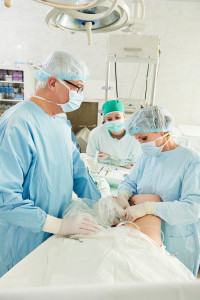 A varicose veins treatment cream is not suitable in all cases – especially when the condition is more advanced. Take guidance from the medical professionals and always seek appropriate advice. Medical treatment for varicose veins often involves surgical procedures which can be both uncomfortable and expensive but, as the saying goes, no pain no gain … and they do work! The main treatment options are:
A varicose veins treatment cream is not suitable in all cases – especially when the condition is more advanced. Take guidance from the medical professionals and always seek appropriate advice. Medical treatment for varicose veins often involves surgical procedures which can be both uncomfortable and expensive but, as the saying goes, no pain no gain … and they do work! The main treatment options are:
Radiofrequency Ablation
Radiofrequency Ablation involves heating up the wall of the affected vein using radiofrequency energy. This procedure is often under local anaesthetic (sometimes general). Access to the vein is via a cut, often made around the knee area. This incision provides access for the insertion of a small catheter. The surgeon then guides a catheter to the affected area using an ultrasound scanner. A tiny probe is then inserted in order to bombard the affected area with radio frequency energy. This heats the vein until its outer wall collapses and has the result of closing the vein and sealing it shut. The result renders the vein useless as blood cannot enter it. Blood will then automatically find an alternative route back to the heart via a healthy vein.
Endovenous Laser Ablation Or EVLA
Endovenous Laser Ablation for varicose veins (EVLA) is a process which again requires local anaesthetic. Likewise, it involves a catheter being inserted into the vein and guiding into position in exactly the same way as described above. However, this time a minute laser is guided down the catheter. Once in position the laser is then fired to deliver short bursts of energy. This has the effect of heating up the vein to close and seal up the entire affected length. With the vein being sealed the blood flow back to the heart will automatically have to find an alternative, healthy route.
Sclerotherapy
There is an option to heating up the veins to seal them shut. Sclerotherapy for varicose veins involves the injecting of a special type of foam substance into the affected vein(s). The foam then causes the vein to seal itself shut. This causes the blood flow to find an improved, healthy route back to the heart. With no blood flowing through the affected vein the symptoms and swelling will fade. Often they will completely disappear over a short period of time.
The surgeon will administer a local anaesthetic before guiding the injection into place using the ultrasound scanner.
Ligation and Stripping
Ligation and stripping of varicose veins is a surgical procedure which involves tying off the affected vein before completely removing it.
To do this involves 2 incisions. One at the very top of the varicose vein (often around the groin area) and a second below the affected area (often around either the knee or ankle). The vein is then tied up and sealed before a wire is passed through the entire length after which the surgeon will then “simply” pull out (strip) the affected vein.
This procedure is more invasive and the recovery process is longer. It can mean being off work for several weeks. However, once recovered, it doesn’t get more permanent than this!
Natural Ways To Help Varicose Veins Yourself
When it comes to prevention of or natural treatment for varicose veins (particularly when affected at early stage) I recommend the following three basic steps:
- Take more and regular exercise. This need not be over strenuous – gentle walking, cycling, swimming etc will help keep veins healthy.
- Avoid or reduce the amount of time spent standing up for prolonged periods. Change position and move around regularly.
- Elevate the affected leg or legs when resting to reduce the pressure on the veins. It’s easier for the veins to pump blood downhill to the heart!
All three of these steps will help towards efficient circulation whilst minimising pressure on any affected veins. You can read more about exercise and the best leg workouts for varicose veins.
Other holistic treatments involving herbs and oils (read our article) exist too. Some of which prove more effective than others shall I say! There are also a number of topical varicose veins treatment creams on the market today. Creams like Venorex which you may want to Check Out Here >>>.
Natural Treatments For Varicose Veins
From the natural benefits of Venorex varicose vein cream to foods, herbal remedies to aromatherapy techniques. There are a wide variety of natural treatments that really do make a difference and there’s a rapidly growing population who are moving away from drugs and surgical treatments. Instead turning to natural treatments and herbal remedies. I always support this where appropriate.
If you’re of the same mind, I suggest you take a look at our info pages. You’ll find these pages packed full of useful information relating to natural solutions for varicose veins based on real experiences.
Compression Stockings
 Invest in good quality compression stockings for varicose veins. Compression stockings, as the name suggests, are specifically designed to squeeze and compress the legs. It’s this compression which has the effect of improving circulation. They are certainly not a high fashion accessory (but can easily be hidden). Whilst they may also feel a little strange initially, the idea is that they are tight round the ankle and loosen the further they go up the leg. It’s this effect that encourages and supports the upward blood flow back to the heart.
Invest in good quality compression stockings for varicose veins. Compression stockings, as the name suggests, are specifically designed to squeeze and compress the legs. It’s this compression which has the effect of improving circulation. They are certainly not a high fashion accessory (but can easily be hidden). Whilst they may also feel a little strange initially, the idea is that they are tight round the ankle and loosen the further they go up the leg. It’s this effect that encourages and supports the upward blood flow back to the heart.
Compression stockings do help in the relief of varicose vein associated pain and discomfort. They will also help reduce swelling but the jury is out as to whether they can actually prevent the worsening of the condition. Experts have not proven that they will stop the appearance of new varicose veins.
They come in differing sizes, shapes, lengths, designs and even colours … you can even buy them as tights! They also come in different compression ratings from light compression upwards.
Venorex Varicose Vein Cream
Introducing the all new Venorex varicose vein cream – the natural way to eliminate the appearance of varicose veins!
Venorex varicose vein cream is a brand new, all natural skin care product designed to reduce both the swelling and the appearance of varicose veins and spider veins. It also helps to heal the broken and enlarged capillaries and to eliminate the associated red blotching.
Specifically designed to target spider and varicose veins safely, Venorex™ is a professional strength but all natural formula. A highly concentrated complex of plant extracts, anti-aging peptides and vitamins is what makes the product so unique. Presentation is in a non-greasy cream form thus making application topical and simple. Venorex is also suitable for all skin types.
Vitamin K formulation has long been recognised in and associated with varicose veins treatment cream. Venorex though is much, much more than this. In fact it contains eight times more natural botanicals that really do help reduce the appearance of both varicose and spider veins along with associated red blotches on the skin and broken capillaries.
Venorex Varicose Vein Cream Reviews
Venorex claim an 89% decrease in the appearance of varicose veins, a 95% decrease in spider veins, and an 87% decrease in broken capillaries and associated red blotchiness. I suggest that’s a heck of a claim but as it’s backed by a money back guarantee and there’s a free trial offer it’s worth trying out for yourself. It’s also very often used as a defence cream – results of this are obviously difficult to acurately establish.
Venorex is a varicose veins cream which is claimed to both treat existing varicose veins and spider veins and to defend against them forming in the first place. It’s a topical cream that’s easy to apply, pleasant smelling and absorbs into the skin quickly. It’s formulated from all natural ingredients and so if completely safe to use at any stage of your life.
Read the reviews and you’ll see that Venorex comes highly recommended by dermatologists. We have actually published various reviews which you may wish to read. Venorex varicose vein cream reviews can be found HERE >>. If you decide to give it a try (and we think it’s worth it) you should head over to the official Venorex website .
Don’t hang about because, if you’re quick, there’s a special trial offer that you’d be mad to miss! So, don’t miss out … visit the official Venorex varicose vein cream website. – Click Here >>>
Useful Links
I always prefer to start with natural solutions like Venorex varicose vein cream and other similar options. To find out more about the condition we’ve listed a few top links to expert sites below. It goes without saying that you should always consult with a medical professional.

